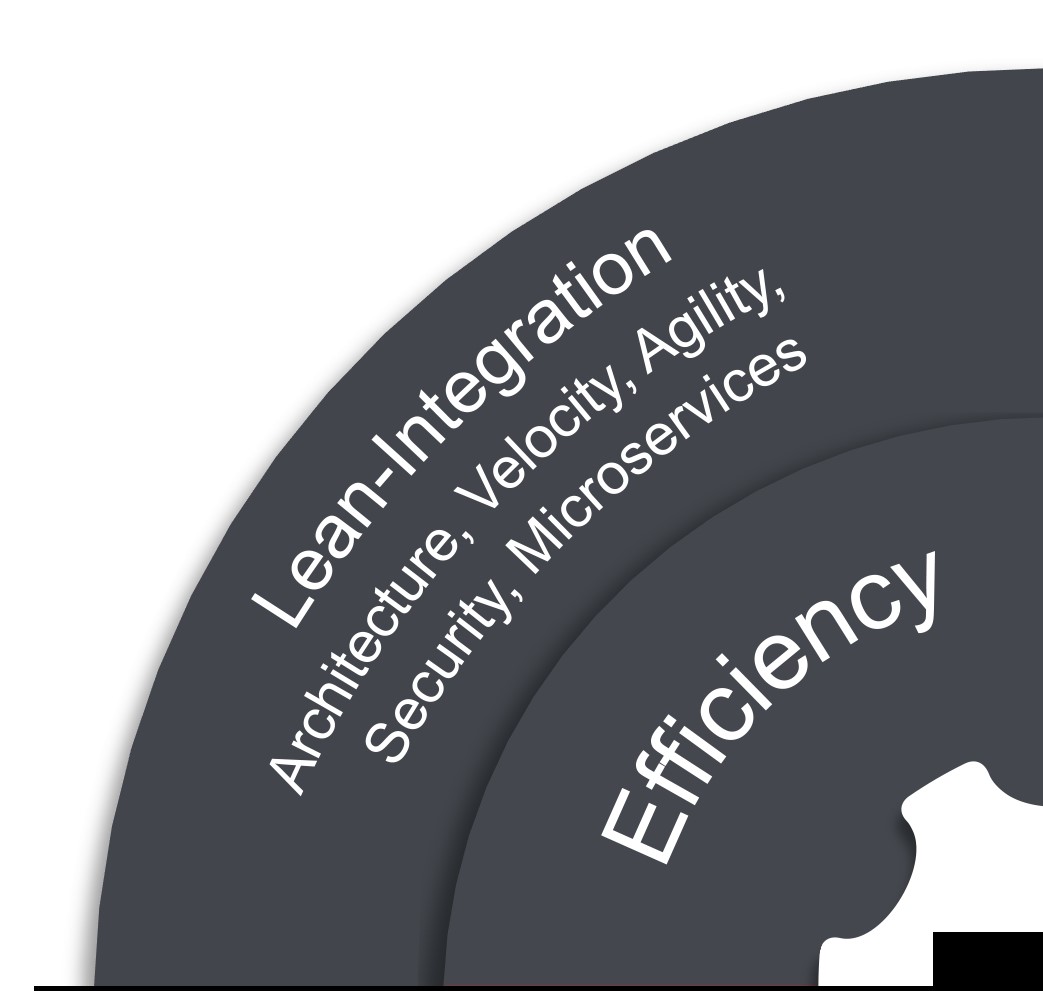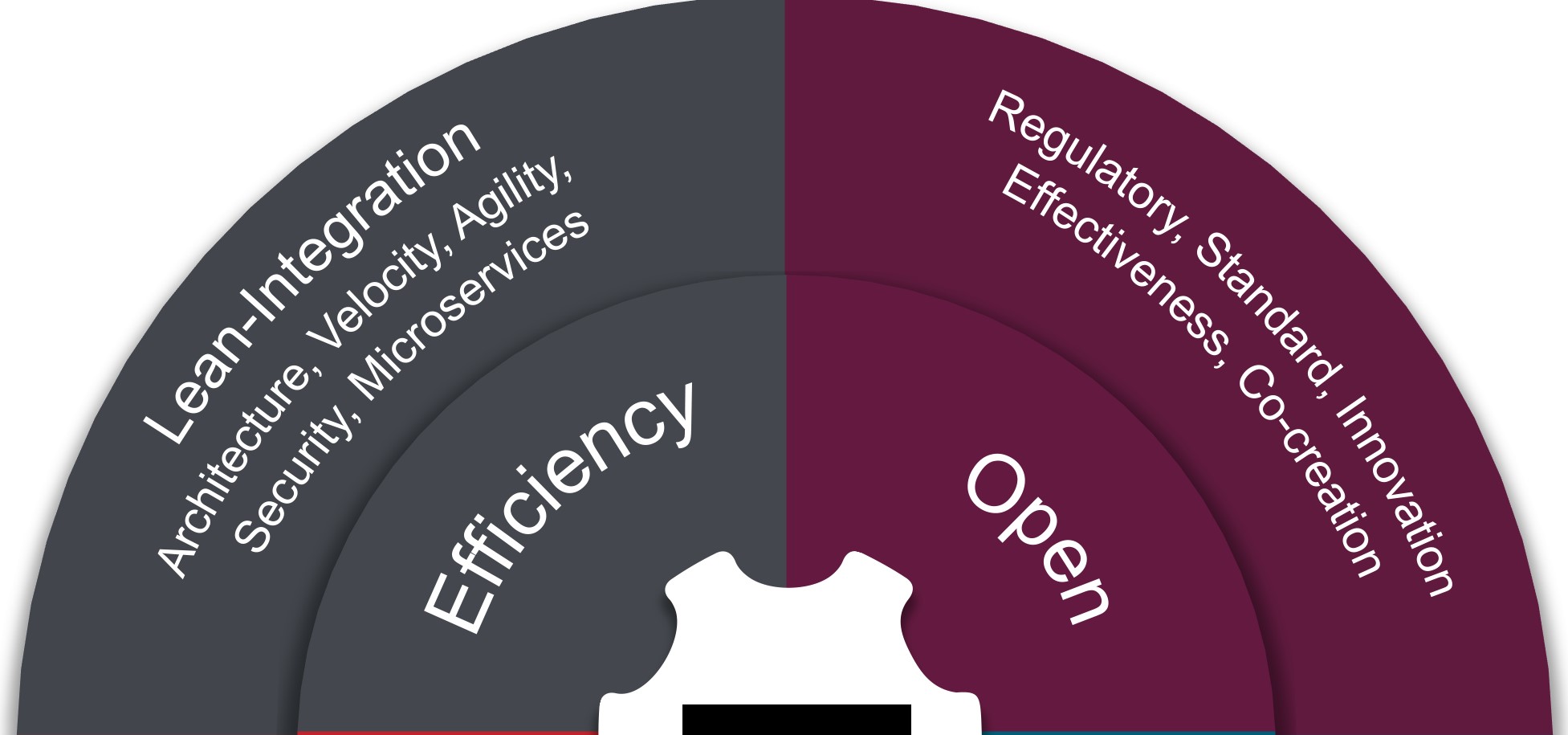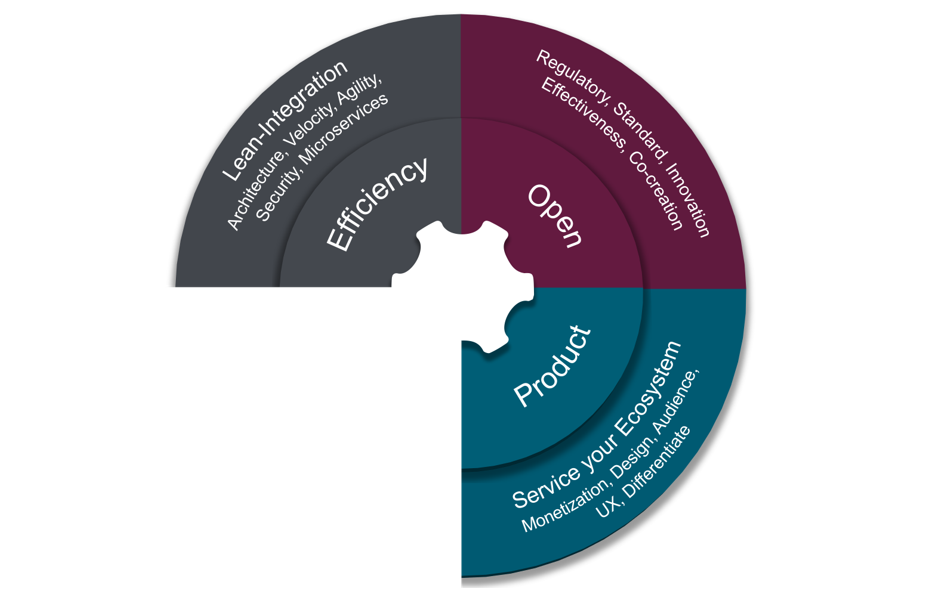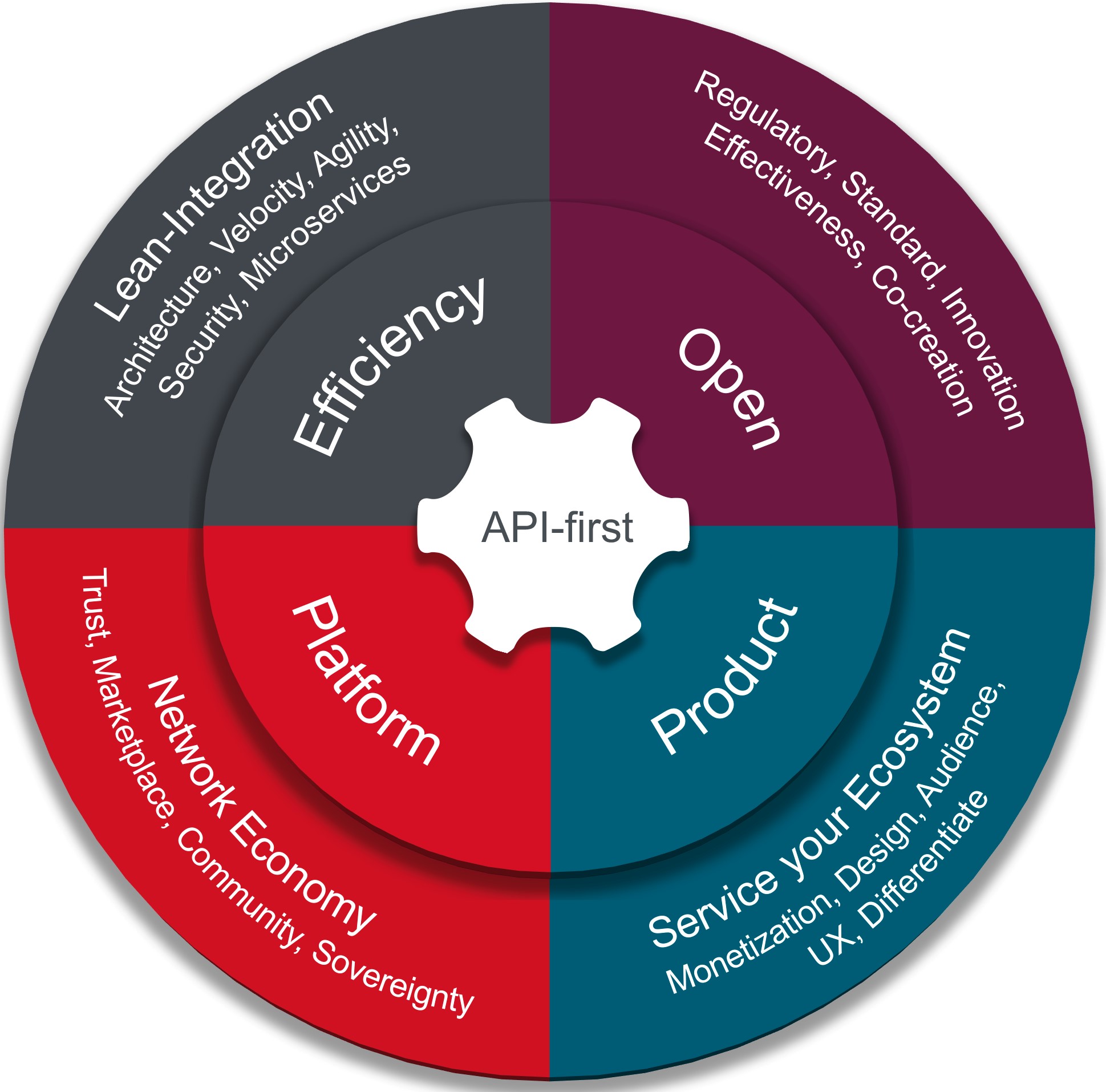As a follow-up to a previous article on the “network economy,” I offer you a sequel in the form of a presentation of our vision of the platform in the new economy.
As promised, I suggest we zoom not only into the platform itself but also into how to implement this Holy Grail; an explanation of the path to access this ultimate architecture.
Of course, in the beginning, you find the little magic tool, not very technical, but terribly disruptive to revolutionize the business: the API.
We have surveyed many customers around the world and observed the evolution of their maturity in understanding the utility and strength of APIs, their power of technical and business transformation, and we have proposed 4 levels of APIs in the modeling which we share below.
1. Efficiency

The first level of understanding of the transforming power of APIs corresponds to a very technical need for architectural optimization. We call it “efficiency.” It is a stage where APIs are used as a tool to modernize information systems, for several benefits:
- Urbanization into high-level business functions and division into microservices.
- Openness to agile methodological processes.
- Adaptation to developments on current terminals (smartphones, voice assistants, etc.), replacing old WS SOAP architectures.
- Security “by design.”
- Need for velocity.
Finally, beyond operational optimization, there is no (or little) impact on business transformation.
2. Open

The second level, the “open” level, is a stage where we can see that APIs, beyond the modernization of the information system, can also be a tool for modernizing the company’s organization, allowing all teams to get involved in innovative developments.
This opening makes it possible to take advantage of external services (APIs) to enrich one’s information system and/or to offer a set of targeted external partners the possibility of using, via APIs, functions from one’s own business to add services to one’s customers (Co-creation).
And it is at this stage that the company will meet the needs of standardization and regulatory compliance (PSD2, e.g. for banks).
The business is beginning to transform itself with a more open vision.
3. Product

The third level, the “Product” level, is a stage where APIs are imagined as a vector for expanding its distribution network, an additional and extremely efficient channel since they naturally integrate into the digital showcases that are the applications and partner sites.
In my opinion, the best example of this vision is a Stripe or a BestBuy. Indeed, BestBuy, which historically sold in stores, has been a pioneer in sales through its website. But to go further, they opened up the ordering of that equipment via an API. That made it possible, for example, to integrate a Hi-Fi equipment purchasing system with a mobile application that determined, according to the acoustic configuration of the chosen room, the best assembly of Hi-Fi components.
The application offers you, after an analysis of your listening location, a configuration with an amplifier, a streamer, speakers, but above all, it allows you, without leaving this same application, to press the “order” button so that BestBuy can deliver this configuration directly to your home, without going through the website or in a shop.
In addition to this “new distribution channel” vision, the API becomes at this stage a product that is consumed by an ecosystem. A developer needs an online payment tool, it incorporates the Stripe API. A developer needs a geolocation tool, it incorporates the Google Maps API. He needs NLP, it incorporates the Louis API from Microsoft.
Your core business is thus exposed via APIs, consumed through applications developed by third parties, and it is at this stage that subjects such as governance and the API monetization system need to be addressed.
4. Platform

Finally, stage four, the ultimate stage of business transformation, is platforming, as we saw in our previous article. The technical API then fades behind the vision of the API as an agent of business transformation, where we no longer think of ourselves as a service provider or consumer, but as an intermediary of this interconnection.
Like Amazon or Uber, we are paid for the intermediation of these connections, and we must provide assets that are essential to the proper functioning of the platform: trust, ease of use, security, and billing means.
These four stages are not just there to position the maturity of the understanding of the transformative power of APIs at a given moment, but more importantly, they represent some milestones on the road to achieving a vision.
This vision must be accompanied by a real strategy and real technical skills, to understand where your strengths and weaknesses lie to support the transformation of your business in a world in full digitalization.
We will try to provide some answers on the strengths of some verticals such as banking, insurance, energy suppliers, telecoms, or transport in a series of short articles that will follow.
Discover five ways that APIs help during uncertain times.


